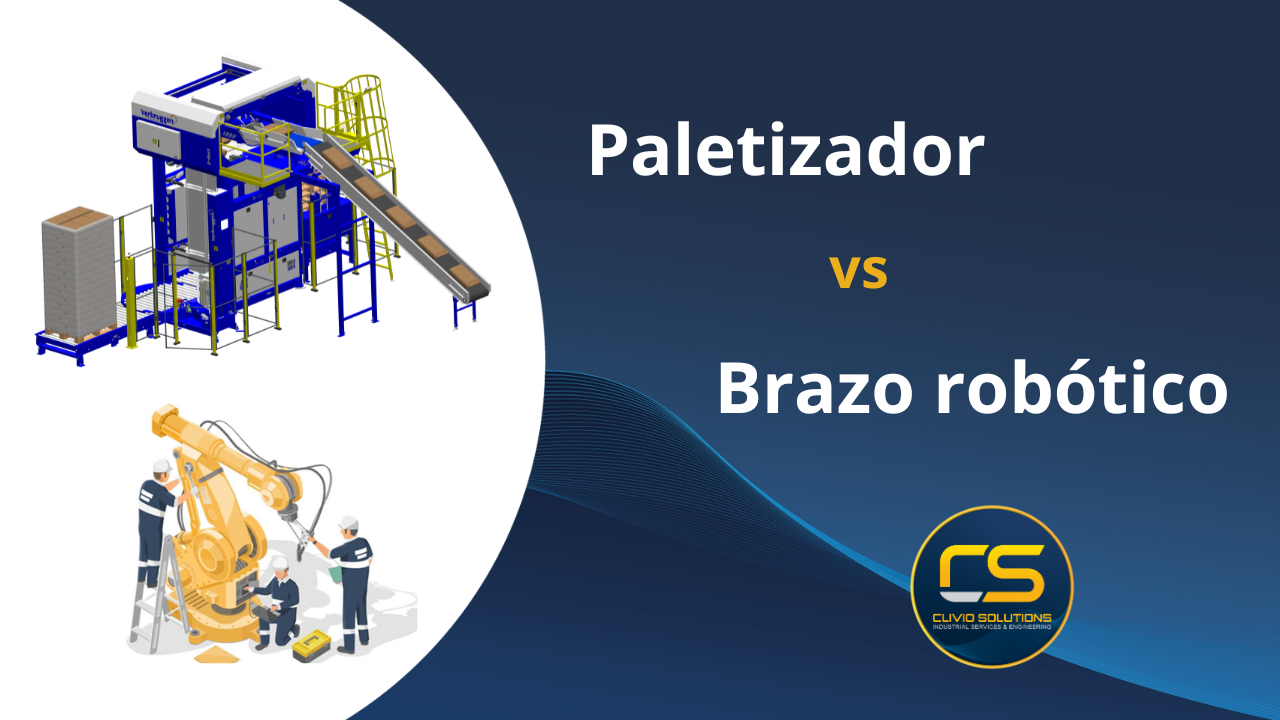

Specialized Palletizers vs. Robotic Arms: A technical perspective for the animal feed industry
In today’s industrial processes—especially in the animal feed sector—automated palletizing has become essential to achieving consistent levels of efficiency, safety, and quality. Two technologies compete for this strategic role: conventional robotic arms and palletizers specifically designed for stacking bags. While both systems enable automation of this stage, their performance, maintenance requirements, and return on investment differ significantly and must be carefully considered when making a long-term investment.
1. Stacking precision and quality
Specialized palletizers are designed exclusively for handling bags, incorporating centering systems, layer compression, and automatic correction that ensure stable, visually appealing, and deformation-free loads. In contrast, robotic arms heavily rely on bags being perfectly positioned and aligned prior to pickup, increasing the risk of errors and downtime due to misalignment.
2. Robustness and ease of maintenance
One of the most common challenges with robotic arms is maintenance. Tasks such as lubrication, battery replacement, or recalibration after emergency shutdowns usually require intervention from the original supplier and specialized knowledge, which can result in high operating costs and delays. On the other hand, palletizers offer a more robust structure with lower wear and tear in demanding environments, and their maintenance can be handled more easily by in-house teams.
3. Operational efficiency and speed
In high-volume production lines, speed and continuity are key. The working cycle of a robotic arm is limited by the additional movements required to pick and place each bag. Palletizers, being optimized for this single task, achieve higher palletizing speeds and can operate continuously over extended shifts.
4. Hidden costs and lifespan
Although the initial cost of a robotic arm may seem competitive, a breakdown of accumulated costs over its lifetime reveals significant differences. Expenses related to technical visits, battery replacements, downtime, training operators on complex software, and even higher bag breakage rates all negatively impact monthly operating costs. Additionally, robotic arms typically have an average lifespan of 10 years compared to up to 20 years for well-maintained palletizers.
5. Specialization vs. versatility
While robotic arms are known for their versatility across various applications, in environments where the end product is bags with variable characteristics and consistent throughput—such as in feed plants—the specialization of the palletizer becomes a critical advantage. Customized configurations for bag types, weights, and stacking patterns ensure greater consistency and reduce the need for operational intervention.
Conclusion
Automating palletizing is a strategic investment that can dramatically improve a plant’s efficiency. However, the technical analysis must go beyond the initial cost or the allure of robotics. In industries like animal feed, where volume, repeatability, and product integrity are critical, specialized palletizers offer a more robust, efficient, and cost-effective long-term solution.
For companies seeking continuity, loss reduction, and maximum return on investment, it pays to look beyond technological trends and opt for proven solutions tailored to the sector’s specific demands.
News

.jpg)

